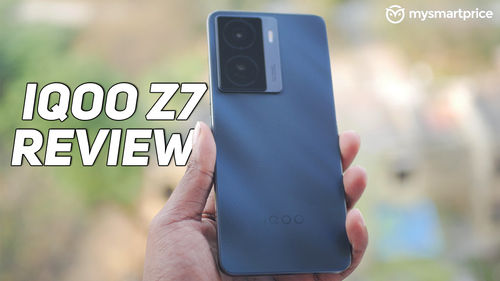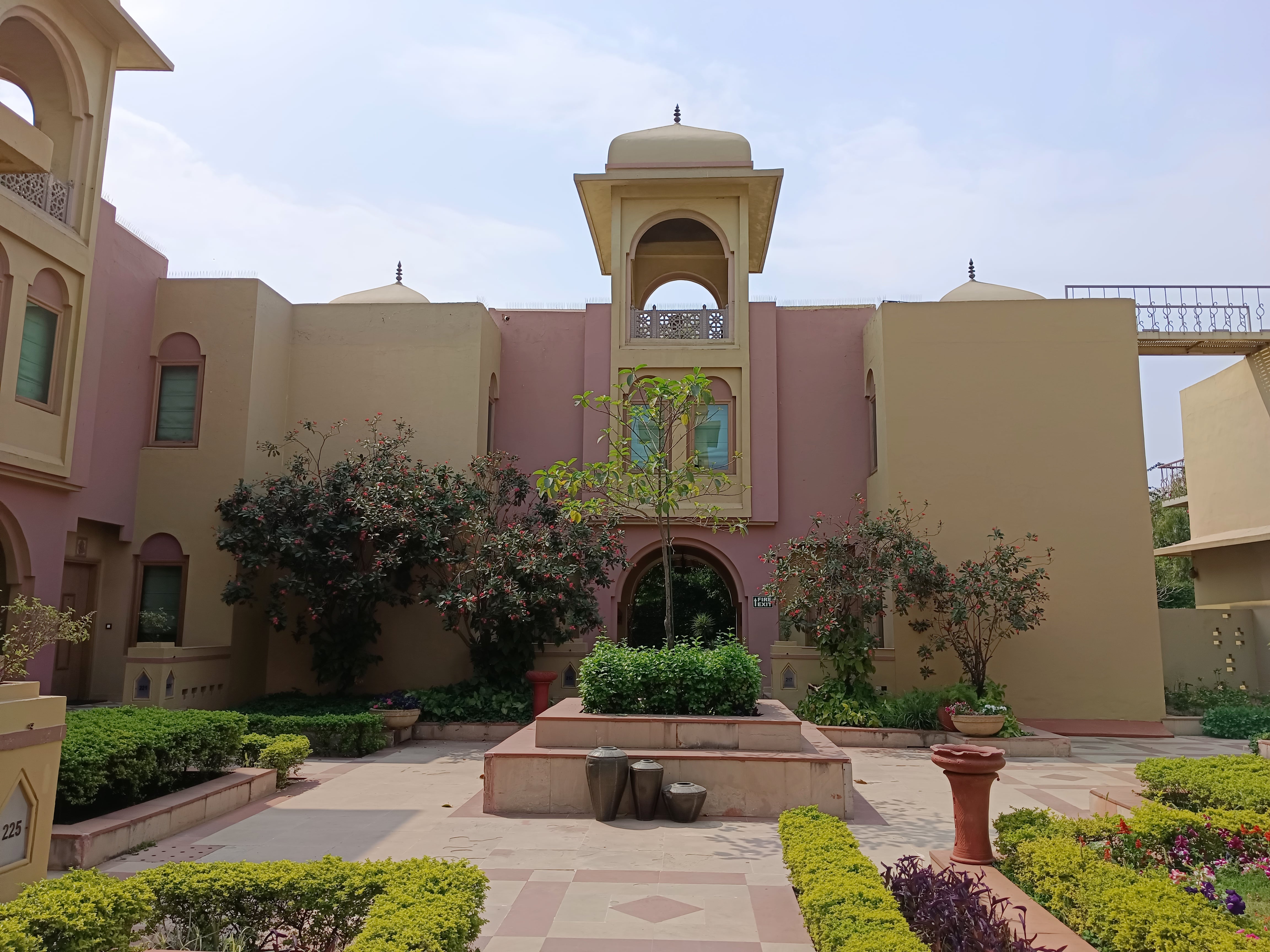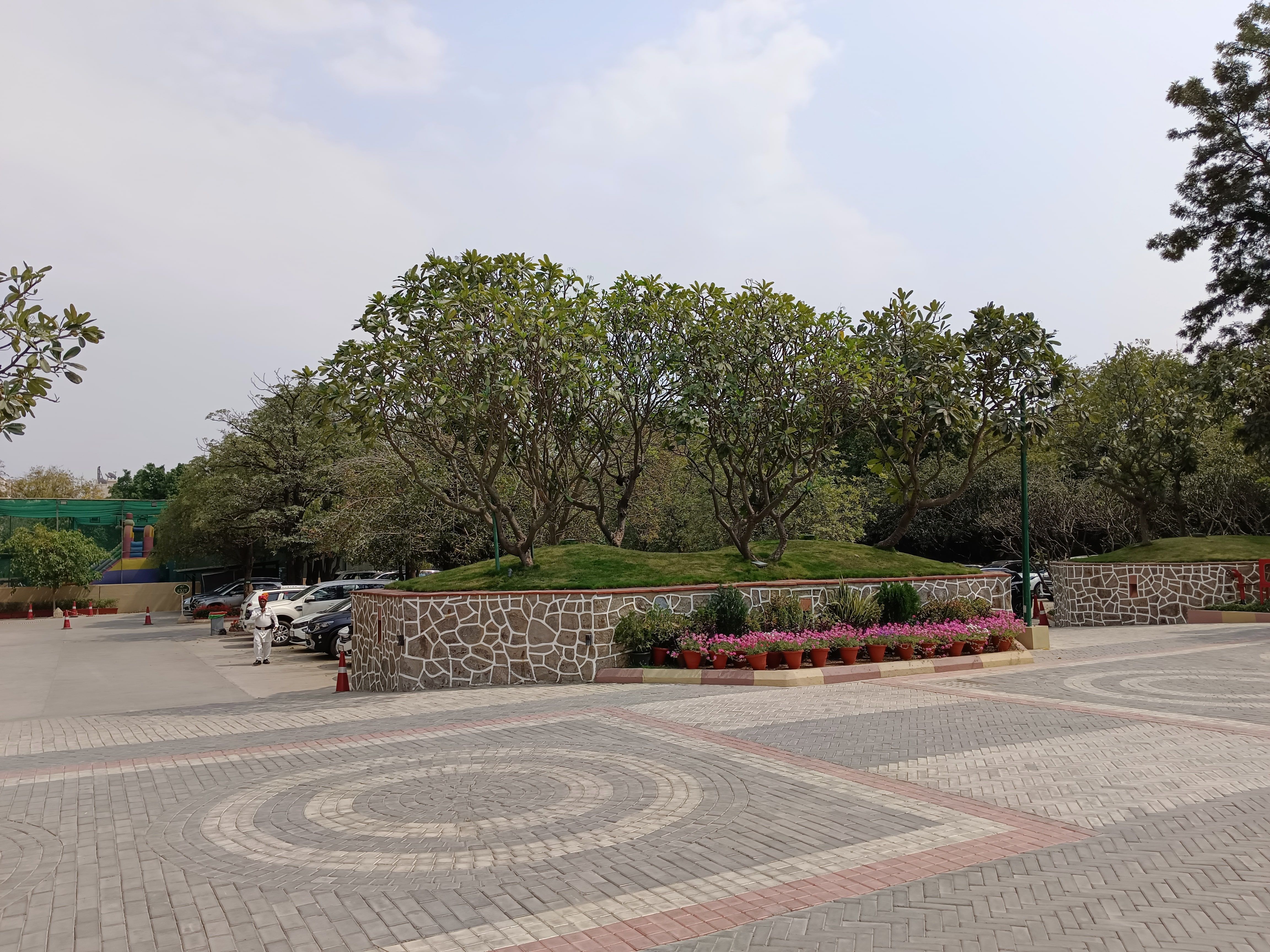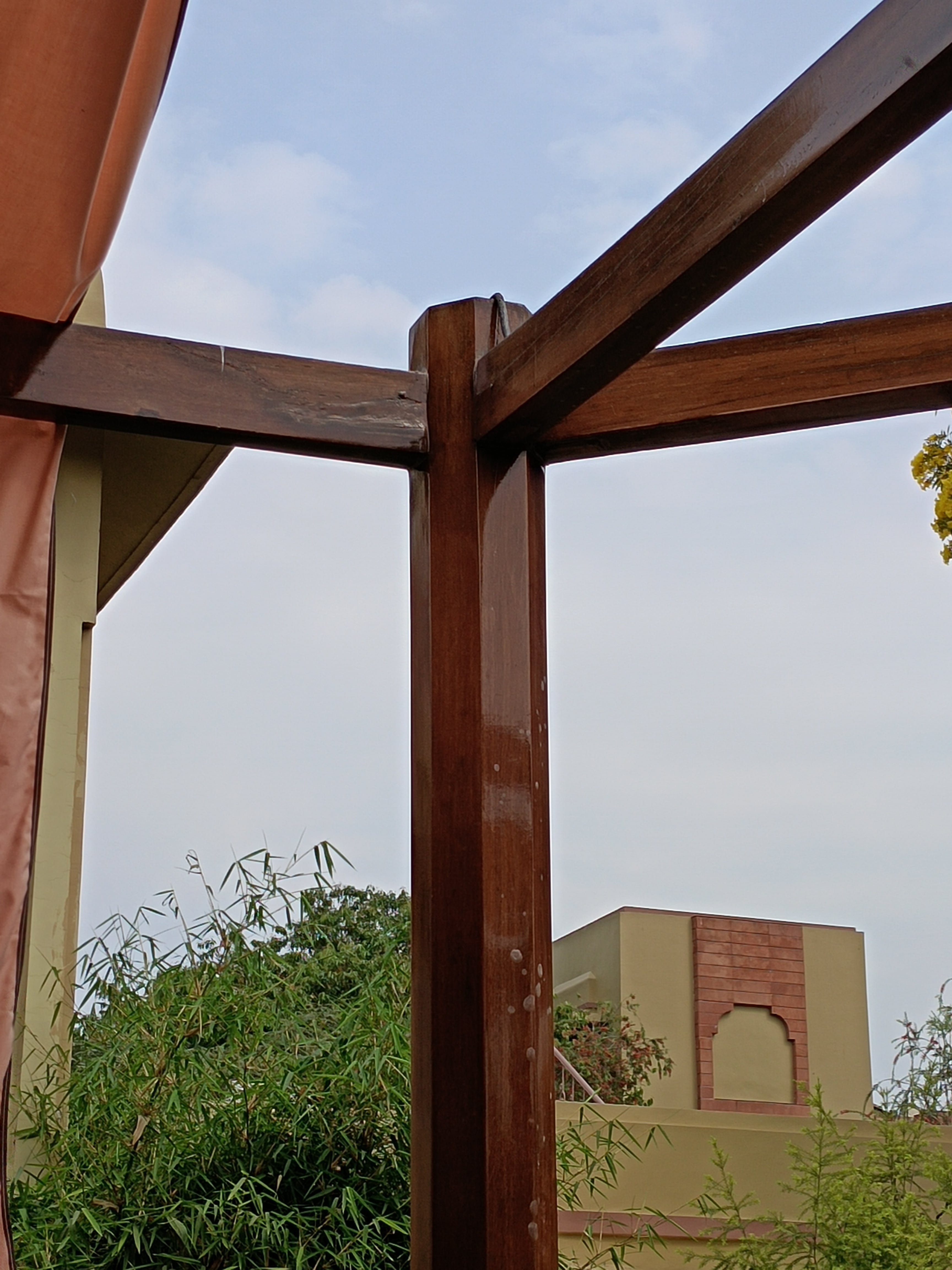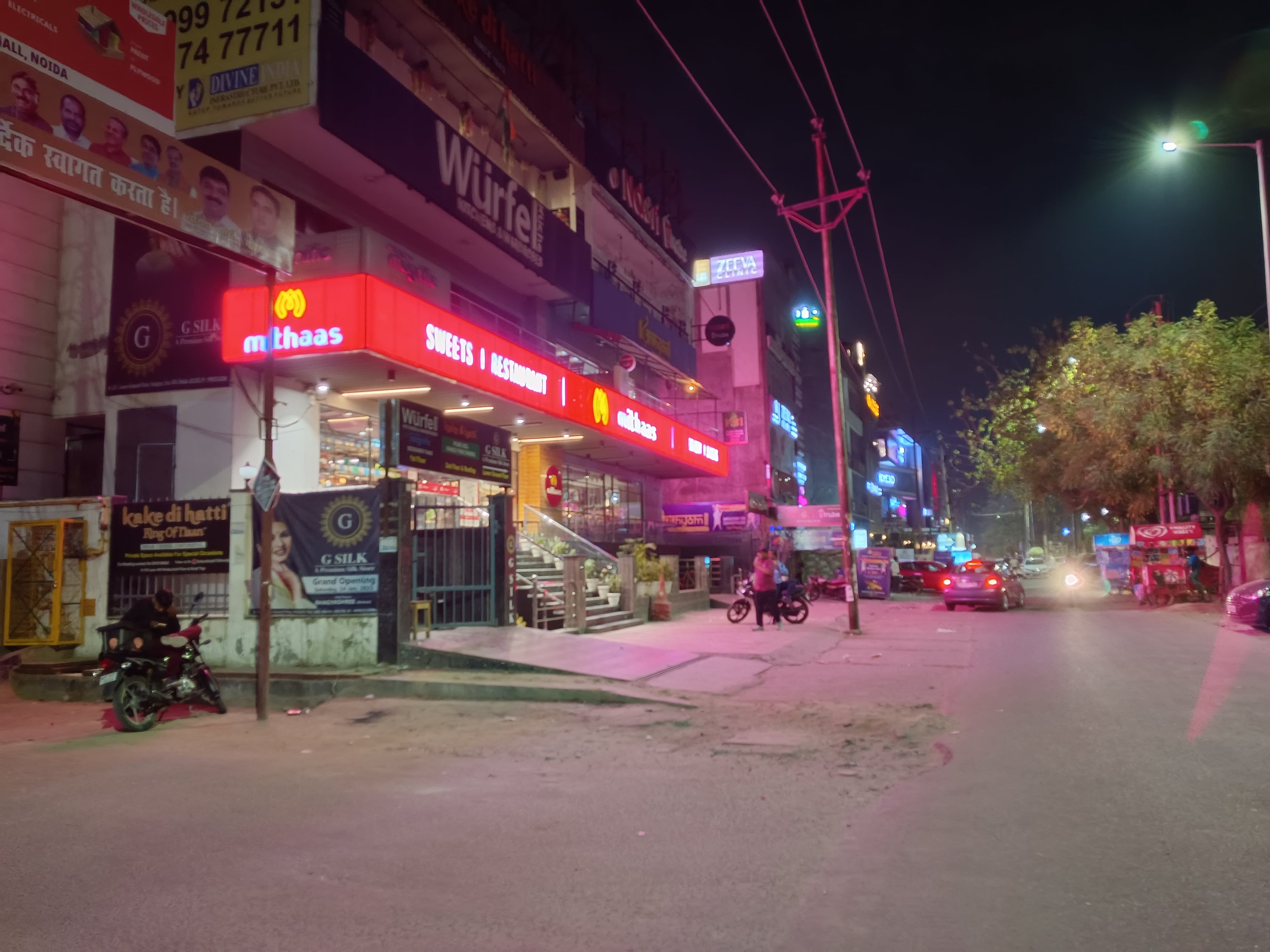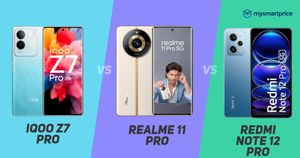
iQOO has been able to cater to different price segments since it set foot in India. From gaming-centric smartphones at the top of the pyramid to a well-structured all-rounder at a sub-Rs 20,000 price bracket. While the latter is a very competitive market, we’ve seen some capable devices from the Chinese tech maker. To put things in perspective, the previously launched iQOO Z6 5G was a value-for-money device at a starting price of Rs 15,499. It came with a Snapdragon 695 processor, usually seen in devices priced at Rs 20,000 and above. iQOO is also known for undercutting its competition with its prices. And with that in mind, the newly launched iQOO Z7 5G seems to follow the same philosophy. This time, a MediaTek Dimensity 920 SoC at the helm makes it the first device in the ‘Z’ series to switch from Qualcomm chipsets.
This is paired with some other major upgrades over the previous version. This includes an in-display fingerprint sensor, making it join a very limited set of phones to inherit it. Additionally, it has a 4500mAh battery, 44W fast charging and a dual-camera setup. So, can the iQOO Z7 5G live up to its legacy? And, more importantly, should you consider buying this over tough competition from Motorola and Poco? We’ve been using the device for over a week — here’s our full review.
iQOO Z7 5G Review: Pricing and availability in India
The iQOO Z7 has been launched in India with a starting price of Rs 18,999 for the 6GB RAM and 128GB storage variant. The higher variant with 8GB RAM and 128GB storage is available at Rs 19,999. The phone is now available on Amazon in India. iQOO also has a couple of offers with HDFC and SBI banks lined up, which brings the price down to Rs 17,499. In other news, prices for the iQOO Z6 have been slashed after the recent launch.
iQOO Z7 5G Review: Design and build quality
iQOO is obsessed with light-reflective and colour-changing back panels, which are carried forward here. It’s not necessarily a bad thing — and the iQOO Z7 is a good example of that. The device is available in two hues: Pacific Night and Norway Blue — we have the former, and it looks absolutely stunning with a light rays theme going on. The panel is made of good-quality plastic and has a matte finish. It does not feel cheap by any means, and neither does it pick up any fingerprint smudges.
The rear camera module is slightly wider than last time and does not protrude much. It also has an elongated island that houses the LED flash — this is made up of different materials to add some disparity. Compared to the similarly priced Moto G73, the iQOO Z7 looks more modern and stylish. Something youngsters — iQOO’s ideal audience, will definitely appreciate.
The plastic frame around the phone has a matte finish, and despite our rough usage, it did not get any scratches. The right frame of the device has a power button and volume rocker. The top part keeps in place a SIM tray and a secondary microphone. The left side has no buttons, while the bottom has a primary microphone, a 3.5mm headphone jack, a USB Type-C port and a speaker grille. It’s good to see the headphone jack is still alive and well in budget devices like this one.
The iQOO Z7 has a flat design with blunt edges. However, at times we still felt like the edges were digging into our palms. An included TPU case can come to the rescue if you experience the same. The device is light, weighing 173 grams, with a slim form factor. The iQOO Z7 also has an IP54 rating, meaning it should survive accidental water splashes.
iQOO Z7 5G Review: Display and speaker
Lately, AMOLED tech has started seeping into the sub-Rs 20,000 price segment and the iQOO Z7 sports the same. It’s lit by a 6.38-inch full HD+ AMOLED display with a 1080 x 2400 pixel resolution. The display is slightly smaller than what the Poco X5 at 6.67-inch and Moto G73 at 6.5-inch provide. This wasn’t a deal breaker, as we usually prefer compact phones.
But the fact that iQOO still chose to stick with a water-drop notch in 2023 is what irked us. Additionally, the thick bottom bezel eats up some of the screen real estate. This makes the device look outdated.
Besides that, the display refreshes at 90Hz with a touch sampling rate of 360Hz. Competition in this price range usually offers 120Hz panels. However, the iQOO Z7 gets the upper hand over the Moto G73 because the latter uses an LCD panel. Moving away from the spec list, the iQOO Z7 has a good display that produces vibrant colours while watching content on Netflix and YouTube. In addition, the device supports Widevine L1, which means you can watch movies and shows on OTT platforms at 1080p.
Besides this, iQOO Z7’s display also supports HDR with a peak brightness of 1300 nits. You can watch HDR content out of the box on Netflix. We watched a few episodes of Wednesday on display, and our experience was good. If the colour tuning doesn’t suit your taste, the iQOO offers a bunch of colour presets to choose from in the settings.

The display is protected by Schott Xensation, and minor accidental drops did not cause any scratches on it. The iQOO Z7 incorporates an in-display fingerprint sensor, which is usually seen in devices above the Rs 25,000 price segment. Unfortunately, the placement is a bit low compared to other devices, so it took us a few tries. Nonetheless, it’s a much-welcome feature.
While nearly everything is excellent in the display department, the phone misses out on the crown in the audio department. For starters, it has a single speaker setup — while we are still okay with that, the audio quality is not good. The speakers sound tinny, and there’s no clarity or bass. It gets loud enough, which is probably the only plus side.

iQOO Z7 5G Review: Performance and software
iQOO devices are always known for their hardware selection. Almost all the phones in their library cater to an audience that prefers hardcore performance. The iQOO Z7 is powered by a MediaTek Dimensity 920 chipset, an octa-core processor built on TSMC’s 6nm fabrication process. The same chipset was seen in the Xiaomi 11i HyperCharge, Realme 9 Pro Plus, and more. The Dimensity 920 goes up against the likes of the Snapdragon 695 found in the Poco X5 and the Dimensity 930 in the Moto G73. The company claims the iQOO Z7 gets a performance boost of about 18 per cent over its predecessor.
The iQOO Z7 uses UFS 2.2 storage and LPDDR4X RAM. Gimmicks such as extended RAM are also available. The phone has support for a hybrid SIM slot which allows you to either use two SIM cards or use one with a microSD card. Both slots support 5G. Additionally, it has support for WiFi 6, which is not very common in this range.

The device had no trouble dealing with everyday tasks, including scrolling on social media apps. Transitions while switching between apps was also smooth and we did not notice any stutter. We used the Moto G73 for a short period before this, and we noticed a lot of instances where opening the app drawer or the notification panel seemed like a task for the phone. Our usual stress test with Google Maps and YouTube premium running simultaneously also worked flawlessly. Calling on the iQOO Z7 also worked well. The microphone and earpiece quality is also good.
Coming to benchmark numbers on the iQOO Z7, the device managed to register a score of 484,050. Meanwhile, the Moto G73, priced similarly, rendered a score of 421,741 — which is much lower. To make sense of these numbers, the Realme 10 Pro (Review), running on the Snapdragon 695 chipset, managed a score of 417,782. This means the Dimensity 930 can outperform most of the competition, and our real-time usage concurs. The Z7 returned with 914 and 2334 in single-core and multi-core tests on Geekbench 6, respectively. The Sling Shot Extreme test on 3DMark got an overall score of 4088.

While the numbers game can last forever, we ran some games on the device. Apex Legends Mobile, on Normal graphics and Very High frame rates, managed to render constant 50fps throughout the game, which resulted in a win. After 19 minutes of continuous gameplay, the iQOO Z7 lost 6 per cent of its battery. Switching the graphics to HD and frame rates to High, the game ran at 40fps with a drop to 29fps during landing. Besides that, it worked flawlessly. Call of Duty: Mobile at Low graphics and Max frame rates ran spectacularly. We did not notice any concerning level of heat during these sessions.
iQOO has also brought Ultra Game Mode and Motion control from its high-end devices, which is a good move. Gamers can make good use of these. The overall gaming experience is good on the phone. We would recommend playing on lower graphic settings to get the most out of the device.

The iQOO Z7 runs on FunTouch OS 13 based on Android 13 out of the box. The company promises two major Android updates and three years of security patches. As of writing this review, our unit is running on the March security patch. FunTouch OS has gone through multiple changes over the years, and as a result, we get to see a much better version right now. There are a bunch of options if you are interested in customising the entire look of your device. Besides the usual, you can also tweak around with transition, lock screen, and fingerprint sensor animations — which is great. Our software experience was smooth, and we faced no issues.
While all that is great, the iQOO Z7 also comes with an array of bloatware. The list includes your usual Hot Apps and Hot Games, Moj, Spotify, V-Appstore, and more. Except for the last one, these apps are also available on the iQOO Neo 7.

While we understand the inclusion of such apps is done to keep the price of the phone at par with the competition, it gets irritating when they push a bunch of unrelated notifications throughout the day.
Some apps can be uninstalled, while dedicated iQOO apps cannot even be disabled.
iQOO Z7 5G Review: Camera performance
The iQOO Z7 sports a dual camera setup at the rear consisting of a 64-megapixel OIS primary camera that uses the Samsung GW3 sensor. The same sensor can be seen on the iQOO Neo 7 (Review), which retails at Rs 30,000. It also features a secondary 2-megapixel bokeh camera. The water-drop notch at the front houses a 16-megapixel camera. The camera UI is pretty much in line with its older models.

Photos captured during the day on our little trip to Manesar turned out great. The images had good details, and the colours were also close to natural. In some instances, the post-processing tends to overdo the greens. Nevertheless, all the photos clicked under good lighting conditions were above average. With the HDR option enabled, captures consisted of good dynamic range with highlights and shadows balanced properly.
We didn’t have many gripes with the camera output, except for some instances where the images were a bit oversharpened. Colour science remains constant when it comes to human subjects with balanced skin tones and nothing over the top. Digitally zoomed photos at 2x were also decent. Portrait mode had good edge detection with a considerable amount of bokeh.
Photos clicked with night mode enabled were crisp and bright. There was minimal noise, but light sources had glare at times. Speaking of selfies, the camera struggles a bit with focusing on multiple people in the frame. Nevertheless, the image had good details, and the skin tones were natural. Portrait mode also works fine.
The iQOO Z7 can shoot videos up to 4K 30fps. Videos had good stabilisation at 4K, and you get to choose between standard stabilisation and ultra stabilisation. Footage shot at 60fps cannot be optically stabilised. The videos had good colours and details, but the dynamic range can get a bit jumpy.

iQOO Z7 5G Review: Battery and fast charging
Regarding the battery capacity, the iQOO Z7 sees a downgrade compared to the iQOO Z6. The newer edition comes with a 4,500mAh battery. We could juice out about 5 hours and 50 minutes with our usage, which included games, doom scrolling through social media apps, and watching YouTube. If you are someone who does not push the device to its limits, there’s a possibility you can get a screen time of above six hours easily. This is excellent battery optimisation.
If the battery capacity is downgraded, the charging brick is upgraded. The iQOO Z7 comes with a 44W charger which takes the device to 88 per cent in an hour from dead. Unfortunately, the device took about an hour and 15 minutes to charge completely.

iQOO Z7 5G Review: Verdict
The iQOO Z7 is the phone we’ll be recommending to most people looking for a balanced performer at a cheap price. While it may look a bit outdated from the front, the practicality of the display trumps the look – especially when you put the Moto G73 in the race. Apart from the display, the device gets many things right, including a good primary camera, great battery life, and fast charging.
Looking past the below-average speaker quality, the iQOO Z7 might be the go-to smartphone under the Rs 20,000 price segment. As for alternatives, the Poco X5 and Moto G73 are available at the same price, but we already gave you a reason as to why you should skip them.
